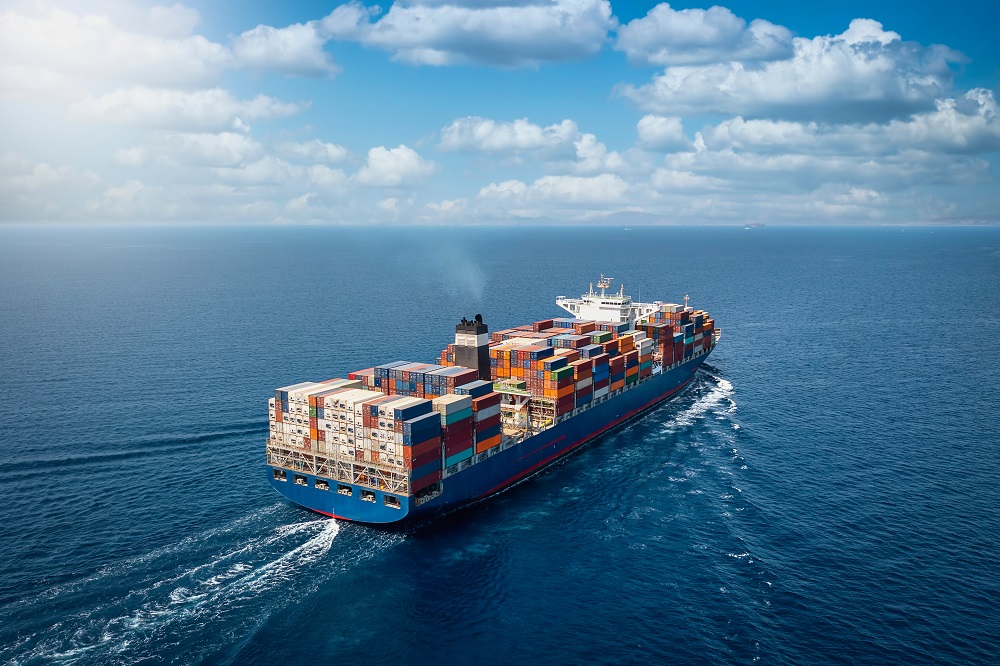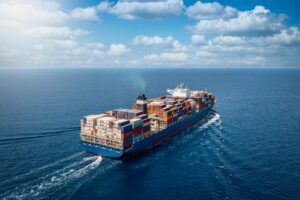Digital tools are changing how the shipping industry works. From container tracking to port automation, technology is improving speed and accuracy. Knowing how these tools help save time and reduce costs is important if you’re in maritime logistics. Learn how companies are using them right now to improve results.
How digitalization is reshaping global maritime transport
What’s changing the way goods move across oceans? It’s not just bigger ships or busier ports—it’s technology. The shift is no longer a trend; it’s standard practice. Digital transformation in shipping is helping the maritime sector adapt faster, reduce risks, and stay competitive.
Today, nearly all major players are investing in maritime logistics technology to keep up with the volume and complexity of global trade. From digitized paperwork to satellite tracking, the industry is moving away from manual systems and embracing faster, smarter operations.
Faster processing times + less human error = fewer delays and lower costs
A big part of this change is better visibility. Where are your containers right now? How’s the port traffic at their destination? Thanks to marine traffic integration, answers to these questions are just a few clicks away. Port managers and cargo owners can now make real-time decisions instead of waiting for updates via email or phone.
This also feeds directly into supply chain digitalization. When a container is loaded, digital records update inventory systems and trigger tasks in other parts of the supply chain. Everyone, from freight forwarders to importers, benefits from fewer surprises and more predictability.
The focus now is on connecting all elements—ships, ports, software, and people—into one synchronized flow. ERP software systems specifically tailored to shipping and trading needs are increasingly supporting that flow.
Key technologies driving innovation in the shipping industry
Let’s look at what’s powering this transformation. Several technologies have moved from “experimental” to essential in the past few years, bringing measurable improvements in operations and efficiency.
Shipping industry innovation isn’t just about autonomous ships. In practice, it’s about tools that reduce waste, errors, and downtime. These are technologies being actively used in ports and vessels today:
- Port automation systems now handle container sorting, crane operations, and customs documentation. This saves time, reduces labor bottlenecks, and improves overall accuracy.
- Machine learning and AI are being used to predict port congestion and recommend optimal routes, which reduces fuel costs and delays.
- Integrated data platforms are helping companies align purchasing, sales, and shipping logistics—especially when combined with modern ERP software systems.
One overlooked area? Specialized platforms for niche markets. Take Seafood ERP Software, for instance. It’s designed for businesses importing perishable goods and helps manage temperature-sensitive tracking, expiry alerts, and customs compliance.
Why does this matter? Because generic systems often fall short. Tailored software makes a real difference, especially when dealing with regulatory complexity and tight margins.
The role of IoT and automation in container tracking at sea
Real-time tracking is no longer optional. With global shipments passing through multiple ports and jurisdictions, having visibility into container status is crucial. Container tracking via IoT is solving that.
Small devices attached to shipping containers now transmit location, temperature, humidity, and door status data. If something goes wrong—like unexpected movement or delays—you know immediately. This helps prevent losses and lets you act faster.
That data isn’t isolated. It integrates with dashboards, mobile apps, and smart shipping solutions used by operations teams. Companies can automate alerts and plan responses without waiting for calls or emails.
Here’s where port automation systems come into play again. When a container arrives, systems automatically trigger unloading processes, notify customs, and send estimated time-of-arrival updates to the consignee. The result? Smoother handoffs and fewer errors.
Another benefit of automation and IoT is reducing dependency on manual updates. Instead of relying on someone to check the status and send an email, sensors and software handle it in real-time. This directly supports digital transformation in shipping, making workflows more agile.
VISCO Software offers a practical example: It provides automated container tracking, updates users in real time, and sends notifications for delays. This reduces stress for small-to-midsize importers trying to coordinate teams across time zones.
Examples of digital solutions transforming freight operations
Now that we’ve seen the tech, how are companies using it? Some real-world applications of smart shipping solutions show how much time and money can be saved through digital tools.
For instance, companies managing multiple suppliers and destinations now use centralized systems to sync shipping data with purchasing and sales. This is especially effective for importers who often struggle with silos between departments.
One connected platform = fewer emails, faster decisions
Sea freight technology trends in freight forwarding show a shift toward customizable platforms. Software is being built to match specific business models—whether you ship textiles, electronics, or seafood. And thanks to web-based platforms, users can access data on any device from anywhere in the world.
One powerful benefit? Accurate cost forecasting. Systems now automatically account for tariffs, freight charges, handling, and even demurrage fees. Importers no longer rely on spreadsheets. Instead, they use platforms that show landed costs for every shipment and line item.
This ties back to supply chain digitalization, where everything is connected: suppliers, forwarders, customs brokers, accounting teams, and even sales reps. The result is not just efficiency but better planning.
For businesses using ERP software systems, like Visco Software, the ability to plan inventory around shipping lead times is a game changer. The platform’s mobile app gives sales teams access to real-time stock and order history—even on the go.
Opportunities and risks in the digital future of maritime logistics
Technology brings advantages but also responsibilities. Companies must stay informed and cautious as they integrate digital tools into critical operations. Let’s break down the pros and cons.
On the opportunity side, the biggest gain is control. With better visibility and faster response times, firms reduce costs and minimize surprises. Maritime logistics technology also helps standardize operations, which supports better customer service and internal coordination.
But digitalization has its risks. Systems must be secure, reliable, and interoperable. Integration is not always simple—especially when ports and partners use different software. That’s why industry-wide collaboration is essential. No single company controls the full supply chain.
Cybersecurity is also a concern. With more devices and data online, ships and ports become targets. It’s vital to regularly update software, audit access, and train employees on best practices. A single weak link can disrupt an entire logistics chain.
Companies also need to plan for flexibility. What happens if one port changes its customs process overnight? Or if a cloud service goes offline for a few hours? Being too reliant on one tool or platform can be a vulnerability.
Still, for businesses that adopt thoughtfully, the advantages are clear. The future of maritime logistics isn’t about guessing what’s next—it’s about using today’s tools to operate faster and smarter in a connected world.





